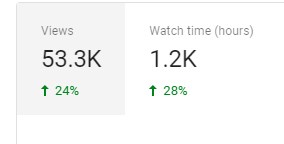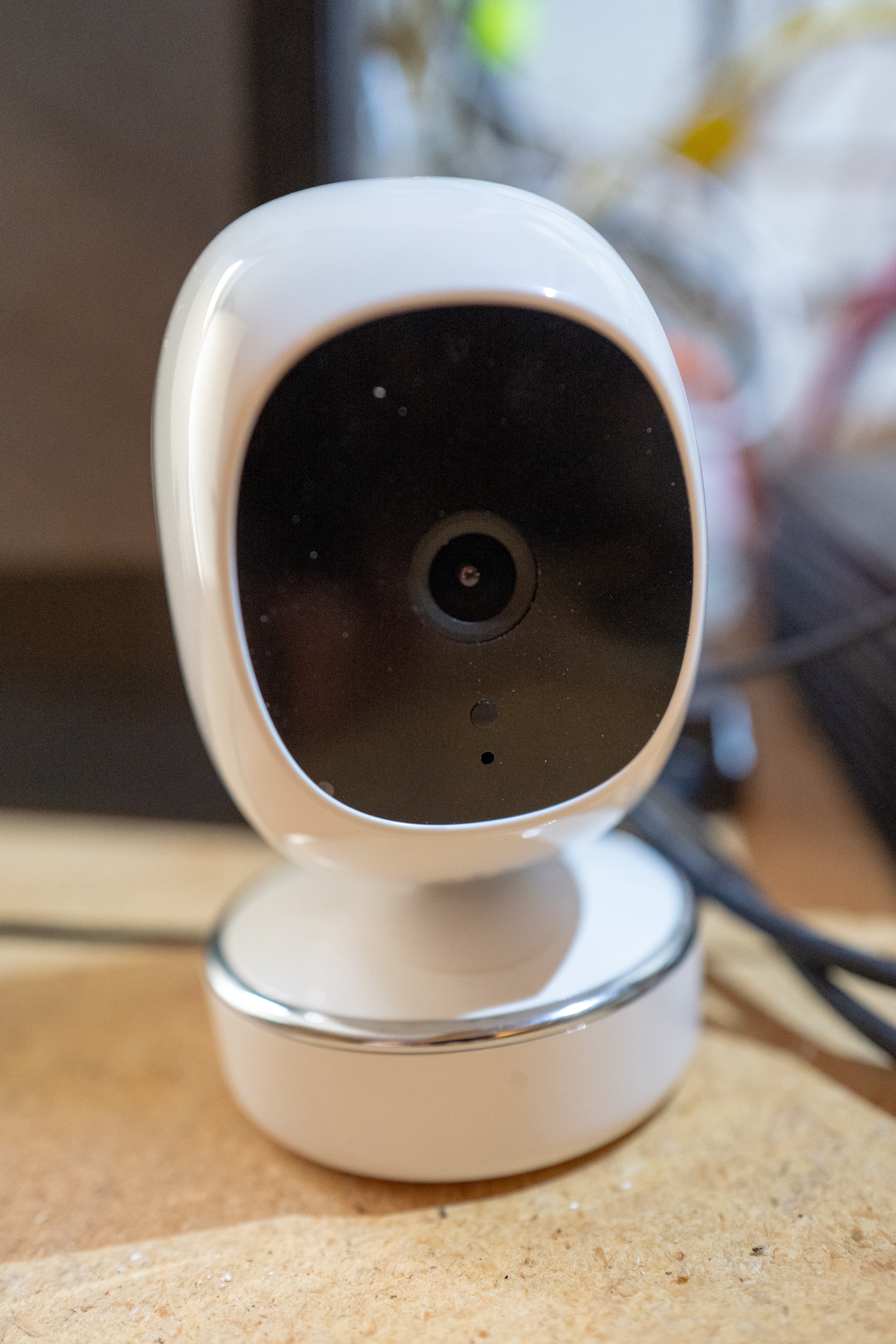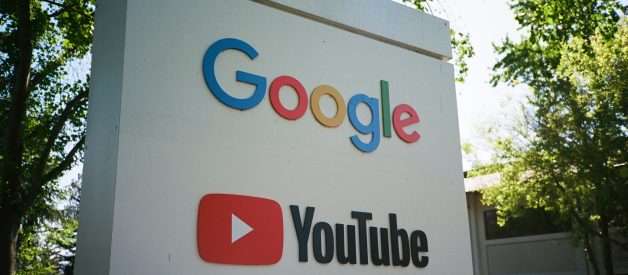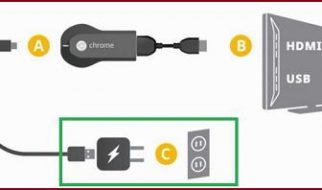Content over quality, letting haters do their thing, and using comments to your advantage
 Images courtesy the author unless otherwise noted
Images courtesy the author unless otherwise noted
For several years now, I?ve had a secret YouTube channel.
It?s not that anything I?ve posted to the channel is particularly scandalous. On the contrary, I?d always considered the content ? mostly me talking about home automation products in a dull monotone ? too terminally boring to be worth promoting.
Apparently, the internet disagrees with me. Since its launch, my channel has grown to over 1,300 subscribers, easily crossing the threshold for YouTube monetization. It?s had 986,000 views from people all over the world. When YouTube culled spam accounts last year, I only lost one subscriber ? an indication that the people who follow my channel are real and engaged.
Here are some things I learned from growing my channel to where it is today ? and some tips for how you can start your own monetized channel, too.
People Watch a Lot of Youtube Videos
When I first started to look into YouTube stats, I was shocked. People watch 5 billion YouTube videos per day. That?s an average of more than one video per day for every internet user in the world.
People watch 3.25 billion hours of video on YouTube per month. Think about that for a moment ? that?s a mind-boggling amount of time. It?s more than 135 million person-days of time spent on the site every month.
Even on a personal level, I was blown away by the stats. In November, my channel received 53,261 views, and people spent 70,000+ minutes watching my videos. It?s incredibly humbling to know that collectively, people spend whole days each month consuming my content. Statistically, with 50 watch hours per month, someone is watching one of my videos at all times, day and night.

The overall lesson is that in this environment, there?s more than enough watch time to go around. No matter how specific or weird your niche is, there are probably a few thousand people per month who want to watch videos about it.
That?s not to say that because you can get a lot of views for your videos, you will get a lot of views. It?s still very possible to post a YouTube video and get zero views, or only a handful. But if you put out content that engages an audience, YouTube will find that audience and bring it to you.
And if you?re a marketer and you?re not on YouTube, remember that you?re missing out on a place where people spend literally billions of hours of their time.
Content Matters More Than Production Quality
Most YouTube starter guides will tell you to get a nice video camera, some lights, a backdrop, etc. before you start shooting videos. They?ll even provide you with helpful affiliate links to those items!
I say, don?t buy those. I?ve never seen any correlation between the production quality of my videos and their views, engagement, or earnings.
And I?ve shot videos with some truly awful production values. In one video, I put the camera down in the middle, causing the screen to go blank for a few seconds because I couldn?t get the back of a device open one-handed. It?s received 90,000 views and earned nearly $300.
 Everything about this video is terribly produced ? except that the information was well chosen and helpful.
Everything about this video is terribly produced ? except that the information was well chosen and helpful.
Why? Because I still got across the information people were looking for when they viewed my video, and that?s really what matters ? both to your viewers and YouTube?s recommendation algorithms. Sometimes, people even prefer badly shot videos ? it?s proof that there?s a real person behind the camera sharing real info, and not the social media department of some mega-corporation.
That?s not to say that all your videos should be poorly shot. But unless you?re in a field where production quality is crucial, focus less on making the perfect video and more on sharing useful information with your audience.
The same goes for editing. I rarely edit my videos. In many cases, I could spend an hour shooting multiple takes, cutting in different camera angles, recording voice-overs, etc. to get the video perfect. Or, I could spend that same time making more videos. The latter almost always leads to a better return.
It also makes a YouTube channel a great side hustle. Think about the battery change video I described. It?s about two minutes of me talking. Let?s be conservative and say it took me another three minutes to describe and upload it. That means it took me five minutes, or .0833 hours total, to produce it. If it ultimately earns at least $300, that means I made the equivalent of $3,600 per hour during the brief time I spent creating it.
Not every video does as well. But since I skip editing and focus on shooting more videos, I can grow my channel in big bursts of video that take very little of my timetoproduce. If I get a new product, for example, I might sit down for an hour and shoot 10-12 videos about it. They?ll slowly earn little bits each day, often for years.
I could easily spend an hour editing one of them to perfection. But I?d rather have 10-12 ugly but effective videos than one perfect one. Make lots of videos, and see which ones your audience likes. As I shared in another article, it?s the Matt Farley approach to video.
Research Helps, But Some Winners Will Surprise You
That?s not to say that I never do any work to help grow my channel beyond shooting videos. To make sure your poorly-shot videos are sharing the right information, it?s helpful to find out what viewers actually want to know about a product or technology.
To do this, I enter the name of the product into AnswerThePublic, and I look at the user questions it generates. I highlight any that I think I can answer and then make a video about each one.
It?s how I?ve found such hidden gems as ?Does the Nest Thermostat Have a Battery?? I never thought to ask about that, but apparently, 5,600 viewers have been curious (and surprisingly anxious) about it. Or ?Google Wifi Wired Connection,? which is worth 72,000 views.
I also use Wordtracker and Google search completion for video ideas, or I look at questions people ask on Amazon or in comments on my other videos.
That said, you can?t predict everything. Sometimes, you?ll have that weird video that does really well for reasons that make no sense whatsoever.
For example, 42,000 people have been curious enough to watch my video about an obscure mode on the Nest Learning Thermostat that allows you to deal with climates that have big temperature swings from nighttime to daytime. Go figure.
Again, that?s why it pays to do research, but also to shoot as many videos as possible. You never know what will find an audience.
Haters Gonna Hate
The incomparable Taylor Swift got it right when she said, ?Haters gonna hate, hate, hate, hate, hate.? And nowhere is that truer than on the internet.
Especially if you care more about information than production quality, you?re going to get lots of comments from people who are angry about your camera techniques, audio quality, and a myriad of other little details. You?ll also get people who didn?t get what they wanted out of your video and want to make this very clear to you, often in extreme detail.
The key, I?ve found, is to see all comments as a good thing. Attention is the currency of the internet. If someone took the two minutes to watch your video, and then another five to compose a comment complaining about it, that means the video really mattered to that person. They cared enough about it ? good or bad ? to invest time into viewing and reacting to it.
Much worse than negative comments are videos that get no views at all. These are the ones that people didn?t care enough about to finish watching, much less complain about. I?m much more offended by a low audience retention metric or a zero-view video than one with angry comments.
YouTube, it turns out, agrees with me. Their algorithms, as far as I can tell, don?t care at all if people like or dislike a video, or praise or disparage it. It?s all engagement, and engagement of any kind will get your video ranked higher, earning you more.
 Fitbit Weather App, my most disliked video, has still received almost 10k views.
Fitbit Weather App, my most disliked video, has still received almost 10k views.
I?ll say, too, that although I?ve gotten plenty of haters on my channel, there are also some genuinely caring people out there.
When I posted a video about Fitbit?s sleep score, I got comments from several visitors who were concerned that I wasn?t sleeping enough. ?Dude, it seems like you need more sleep. Don?t make it less than 7 hours? wrote one, while others weighed in on whether my total sleep time and time spent in various sleep stages were appropriate for my age.
It?s touching to know that there are some genuinely caring people out there on the internet. But again, don?t take haters at face value. Negative comments mean engagement, and engagement means you?re doing your job. Like T Swift says, ?Shake it off! Shake it off!?
The one exception is abusive comments. I?m fine with people being negative or critical, but I delete any comment that uses racist, hateful, or abusive language. I don?t tolerate this kind of language in the real world, and I won?t tolerate it on my channel.
Comments Are Your Friend
While some comments are positive or negative, most are just from people who want to know more or ask a question.
These are extremely valuable. They show what it is about your video that people find engaging, and where they needed to know more. I often get new video ideas by reading comments on my other videos.
I try to respond to comments whenever possible. It keeps people coming back to your channel, and it encourages them to subscribe. I?ve also seen a bump in my traffic when I respond to comments ? it?s likely that YouTube prioritizes videos from active creators who will be there to answer viewers’ questions.
And as with Medium, writing a comment takes time and keeps visitors on your page for longer. This boosts your engagement metrics, and it encourages YouTube to send more people your way.
Comments are a sacred thing ? appreciate and engage with them!
Monetization Post Adpocalypse is Rosy
In YouTube?s early days, anyone could monetize a channel. You just switched on monetization, and your videos started earning.
Over time, though, YouTube realized that this resulted in ads running against a lot of low-quality ? or even offensive ? content. Advertisers realized, too, and started to pull back from the platform.
In 2018, this resulted in a massive, overnight shift in YouTube?s earnings model, which became known as the Adpocalypse. After the changes, only channels with 1,000+ subscribers could enable monetization, and certain kinds of content were banned from monetization altogether.
This was a huge blow to smaller creators since those with a lower subscriber count could no longer make money from their channels. I had about 500 subscribers at the time, and so my channel went from earning little chunks of money to earning zero overnight.
All it meant, though, was that I had to shift my strategy and focus on gaining subscribers (more on that below). In about a year, my channel was up above 1,000 subscribers, and I gratefully switched monetization back on.
And guess what? With all the riff-raff of low quality, exploitative channels removed from the platform, monetization for legit channels has never been better. Advertisers have flowed back to the platform, and you?re no longer competing with tons of channels that post stolen copyrighted content and the like and pull ad dollars away.
Before the Adpocalypse, my channel earned a $5.32 playback based CPM. Now it earns $13.52 CPM.
 CPM is looking good!
CPM is looking good!
Sure, YouTube has grown in the last two years, and my subscribership has grown, too. But that?s a pretty dramatic change from before the Adpocalypse to after. Adapting was challenging at first, but I think my channel is stronger for it.
The biggest challenge now is the long lag between launching a channel and monetizing it. For small creators, it can take a while to get to 1,000 subscribers, even if you?re producing great content. That makes it harder to stay with your channel, and harder to get off the ground.
Stick with it, though! And use the strategies below to gain subscribers faster, too.
Companies Will Send You Free Stuff
As you start to build a following, companies will reach out and offer you stuff to review. You can encourage this by including an email address on your channel page.
I?ve gotten home surveillance cameras to test from companies like Simcam, as well as sensors from Monnit. As an electronics-centered channel, I?ve also gotten to take part in lots of beta tests, including testing the recent Fitbit Sleep Score about a year before it launched publicly, and the Arduino Tre (this never launched, but a lot of the features we tested were integrated into later models of the device).
 Companies will send you stuff to review, like this Simcam (it works well!)
Companies will send you stuff to review, like this Simcam (it works well!)
I?ve noticed that a lot of international companies tend to reach out. My guess is that they see it as a way to break into the U.S. market, especially if they?re too small or niche to get coverage in mainstream tech publications.
Once you reach over 5,000 subscribers, the word is that you can start to apply for sponsored content opportunities, where companies will pay you to review a product. This is where lots of pro-YouTubers make much of their money. The Economist (reported here in Inc.) found that YouTubers with 100,000 subscribers could make up to $12,500 from sponsored videos.
The key with all of this is to be completely transparent with your subscribers. If you got paid to review a product, make that clear in your video. I even tell people if I got a free review unit from the company. Viewers can smell sponsored content from a mile away, and they?ll hate you for trying to slip it by them. Oh, and it?s illegal, too ? the FTC requires that sponsored content be disclosed.
The good news is that if you?re straightforward about it, most viewers don?t mind seeing sponsored content. Some actually see it as the mark of a professional channel ? to the point where influencers on some platforms are actually posting fake sponsored content to show viewers that they?re important enough to attract sponsors.
If You Want Subscribers, Ask
Medium hates calls to action. These include newsletter signups in your stories, overly aggressive links to your company?s website, affiliate links, lines imploring your readers to clap for your story, etc. And for good reason ? on a text-based platform, these kinds of CTAs distract from the reading experience.
On YouTube, though, there?s no such prohibition. It?s fine to ask viewers to take an action, especially if you do it at the right point in your video.
When the Adpocalypse crushed my YouTube earnings, I knew I had to prioritize gaining subscribers so I could reach the 1,000 subscribers threshold to re-enable monetization. So I started including a very simple statement at the end of each of my videos: ?If you found this helpful in any way, please subscribe to my channel. It really helps.?
My thinking goes like this. If a visitor makes it all the way to the end of my video, I?m already pretty sure they found it helpful. And after receiving useful info for free, most viewers are perfectly happy to help you out by subscribing to your channel. They might even want to see more videos from you!
Once I included that line, my subscriber count started growing naturally. It exceeded 1,000 in August, and it?s now up above 1,300 at press time.
I tried out lots of different lines and strategies ? including posting requests in the video descriptions, using YouTube annotations and cards, including my own end screen, etc. Including that simple ask was by far the most effective.
One tip is to focus on only one CTA. Some people ask viewers to subscribe, like, or share. That?s too much ? make up your mind, ask for the same thing consistently, and viewers will respond.
Be Advertiser Friendly
One way to make sure your channel appeals to advertisers ? and thus remains monetized ? is to think about them as part of your audience. What kinds of videos would they want to advertise their product alongside?
The basic answer is ones that are helpful and engaging, but not offensive or divisive. That doesn?t mean you have to have no voice or censor yourself. But it does mean avoiding anything racist, sexist, involving nudity, overly violent, gun/substance focused, etc. Many of these are good to avoid anyway.
Think of your videos as being at about the level of a conversation with a trusted colleague. You might talk about your family, complain about politics, or even throw in the occasional swear word, depending on your work environment. But you?re probably not going to talk about your wild night out, share your feelings about racial/ethnic groups, or tell a racy joke (you aren?t, right? right??).
That?s about where your videos should be. Include your own personality, and share opinions, but make sure it?s something you?d feel comfortable sitting down and watching with a family member or colleague. And if you have a business or product of your own, make sure you?d feel comfortable advertising your own product alongside your videos. Dogfooding, people!
Be Ready to Adapt
If you haven?t guessed it from my article already, I?ll tell you outright ? YouTube (and online platforms in general) are changing all the time. You can have a profitable niche, only to get a TOS change email from YouTube one day that destroys everything.
YouTube, for example, recently announced that it would limit advertising to children to protect their privacy. Goodbye super-lucrative toy review channels!
The key is to be ready to adapt. Often, there?s an easy fix that will keep you in compliance with the platform?s new rules or new earnings model. And in many cases, your channel will be better off for the changes.
Again, the Adpocalypse was painful at first, but my channel survived, and the changes have been a net positive ? both because it made the landscape better for legit channels like mine, and also because it forced me to refocus on gaining subscribers, which built me a better and stronger base.
In the big scheme of things, my YouTube channel is still tiny, even if it?s growing. But it?s big enough to bring in some nice extra income ? and for very little actual work. Wouldn?t you like to earn $3,600 per hour, too?
If you?re not on YouTube yet, I?d encourage you to try it out. Start a channel, shoot a terribly produced video on your phone, upload it, and see what happens.
Wait a few months before you make up your mind ? new channels can take some time to find their place ? but if you do gain an audience, know that it?s very possible to grow a YouTube channel to the point of monetization with very little investment or time. And that you can generate passive income for years once your videos are online.
There?s a joy, too, in reaching an audience, no matter how strangely specific. You wouldn?t know that 24,000 people want to hear your thoughts about your turntable until you put a video out there and find them.
So choose a niche, face down the trolls, tame your potty mouth, do some research (but not too much), and start uploading!


